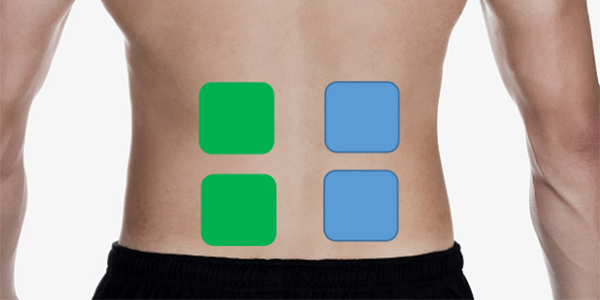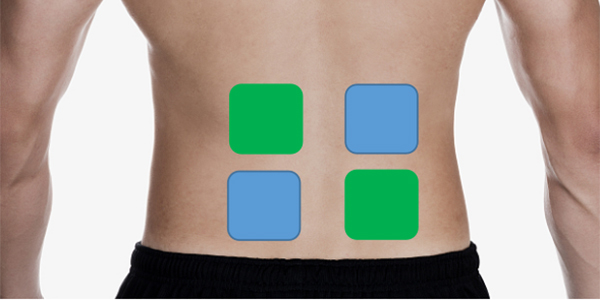what is low back pain?
Low Back pain is a common reason for seeking medical help or missing work, and it is also a leading cause of disability worldwide. Fortunately, there are measures that can prevent or relieve most back pain episodes, especially for individuals under the age of 60. If prevention fails, proper home treatment and body alignment can often lead to healing within a few weeks. Most back pain results from muscle injuries or damage to other components of the back and spine. The body's inflammatory healing response to injury causes severe pain. Additionally, as the body ages, the structures of the back naturally deteriorate over time including joints, discs, and vertebrae.
Symptoms
Back pain can range from a muscle aching to a shooting, burning or stabbing sensation. Also, the pain can radiate down a leg. Bending, twisting, lifting, standing or walking can make it worse.
Diagnosis
Your healthcare provider will assess your back by examining your ability to sit, stand, walk, and lift your legs. They may also ask you to rate your pain on a scale of 0 to 10 and discuss how it affects your daily activities. These assessments help identify the source of pain, determine the extent of movement before pain occurs, and rule out more serious causes such as muscle spasms.
X-ray images show arthritis or fractures, but they cannot detect issues with the spinal cord, muscles, nerves, or disks alone.
MRI or CT scans generate images that can reveal herniated disks or problems with bones, muscles, tissue, tendons, nerves, ligaments and blood vessels.
Blood tests can help determine if an infection or other condition is causing pain.
Nerve studies such as electromyography (EMG) measure nerve impulses and muscle responses to confirm pressure on the nerves caused by herniated disks or spinal stenosis.
Physical therapy:A physical therapist can teach exercises to improve flexibility, strengthen back and abdominal muscles, and enhance posture. Regular use of these techniques can prevent pain recurrence. Physical therapists also educate on modifying movements during back pain episodes to avoid exacerbating symptoms while remaining active.
How to use a TENS for back pain?
Transcutaneous Electrical Nerve Stimulation (TENS). Electrodes placed on the skin deliver gentle electrical pulses to help relieve pain by blocking pain signals sent to the brain. This treatment is not recommended for people with epilepsy, pacemakers, a history of heart disease, or pregnant women.
The best way to ensure you're using your TENS unit for back pain correctly is to speak with a medical professional. Any reputable machine should come with extensive instructions—and this is not an instance where you want to skip the instruction manual. "TENS is a relatively safe treatment, so long as those instructions are followed," Starkey confirms.
That said, before you decide to charge up your TENS unit, Starkey says you'll want to make sure you have an understanding of where your pain is coming from. "It's cliché but TENS (or anything else) should not be used to treat pain of unknown origin or used for more than two weeks without being examined by a medical professional."
As for pad placement during sensory level pain control (no muscle contraction), Starkey recommends an "X" pattern with the painful area at the center of the X. The electrodes on each set of wires should be placed so that the current crosses over the area in pain.
In terms of frequency of use, "Sensory-level pain control can be used for days at a time," Starkey advises. He recommends moving the electrodes slightly with each use to avoid irritation from the adhesive.
The TENS unit should feel like a tingle or buzz that gradually increases in intensity to a sharp, prickly sensation. If the TENS treatment is successful, you should feel some pain relief within the first 30 minutes of treatment. If it is not successful, change the electrode placements and try again. And if you're seeking 24-hour pain control, portable units are best.
The specific use method is as follows:
①Find the appropriate current intensity: Adjust the current intensity of the TENS device based on personal pain perception and comfort. Start with a lower intensity and gradually increase it until a comfortable tingling sensation is felt.
②Electrodes placement: Place the TENS electrode pads on the skin in the area of the back pain or in proximity to it. Depending on the specific location of pain, electrodes can be placed on the back muscle region, around the spine, or on the nerve endings of the pain. Ensure the electrode pads are secure and in close contact with the skin.
③Select the appropriate mode and frequency: TENS devices typically offer multiple modes and frequency options. For back pain, try different stimulation modes such as continuous stimulation, pulsating stimulation, etc. Also, choose the frequency settings that feel suitable based on personal preferences.
④Timing and frequency of use: Each session of TENS therapy should last for 15 to 30 minutes and can be used 1 to 3 times per day. Adjust the frequency and duration of use gradually based on the body's response.
⑤Combine with other treatment methods: To better alleviate back pain, combining TENS therapy with other treatment methods may be more effective. For example, incorporating stretching, massage, or heat application along with TENS therapy can be beneficial.
Select TENS mode

Unilateral pain: Choose the same side of the electrode placement( Green or blue electrode).

Intermediate pain or bilateral pain: choose the cross electrode placement
Post time: Aug-21-2023






